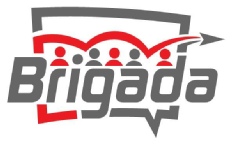One Brigada partner wrote this past week, “Do you know anything about the Pimsleur Approach to language learning? I wonder if any Brigada readers have tried it.
https://www.pimsleurapproach.com/presentation074.asp?sid=25058bnr&uid=225_2685
Their claims seem “too good to be true”, yet Forbes & New York Times supposedly endorse them. If it does work as well as they claim it could be a real tool for missions.” I have used Pimsleur CD courses on four different languages and, I’d have to say, they’ve never disappointed. But what’s your own opinion? (In reality, much of what the Pimsleur method uses is well-developed by folks like Smalley, Brewster, Gradin, and many others, right?) Please give your opinion in the comment box following the web version of this item.










I am a part-time Chinese teacher here in the Philippines. Our main language is Filipino or English but I know Chinese pinyin so, I have used the Pimsleur Chinese with high school students for one year in our school several years ago and found it very effective for teaching spoken Chinese. But since our curriculum had to integrate written Chinese as well, I had to make my own notes to give out to students. We were not able to finish the whole track and there were some lessons I had to skip because they included sessions of saying the equivalent of ” drinking beer” which I obviously could not teach to 15-16 yrs olds studying in a Christian school. Hope this helps!
I am very happy with Pimsleur courses. I purchase Pumsleur course when I visit a new country. I typically don’t get very far into the course but I have found it effective and inexpensive. I can download a whole course on mp3 and PDF for little over $100. Rosetta Stone has nice computer gimmicks but is absurdly expensive.
I like to be able to learn to read and disliked Dr. Pimsleur’s insistence on using audio only, but he feels audio is the natural way to learn a language and avoids injecting our own aural interpretation of written words into our learning – as explained in the very good introductory piece. I recently bought Korean and Polish courses and noticed that they have introduced lessons on reading their scripts, which are helpful.
I’ve tried Pimsleur, along with many other approaches, and I think that whether you like it depends on several factors:
1. Are you primarily an aural learner? If you are a visual learner, you will be frustrated.
2. Do you like to understand structure? You will not like Pimsleur because you are basically just hearing and repeating.
3. Are you an adult? You learn differently from children. I think this is the major fallacy of many of these language programs – they assume that because children learn a certain way, adults will learn that same way.
4. Do you have a deep pocketbook and lots of time? The individual courses are inexpensive, but you spend a lot of time making only a small bit of headway. To get a long way in a language you would need a massive amount of their audio.
5. Do you dislike being “hyped” when you are sold? You will end up being indignant at the ridiculous claims that they make for how easy it is to learn a language. It isn’t, and their approach is not magic.
Having said all this, there is benefit to the hear, repeat, hear, repeat approach, but I would NEVER use this approach by itself.
A friend of mine who has a masters in Second Language Acquisition tried Pimsleur to learn some Russian. When she hit the 2nd or 3rd lesson and was inviting a stranger up to her room for a drink, she knew it wasn’t the vocabulary she was wanting to learn… :)
Overall, she was very disappointed. While the listening part is good for learning to understand, the repeating without getting feedback for mispronunciations was very ineffective.
It is most effective to spend time with someone who speaks the language you want to learn as their first language, interacting in highly charged learning situations.
The agency I work with has found the Growing Participator Approach (GPA) to be more effective and it is our first recommendation to anyone heading overseas.